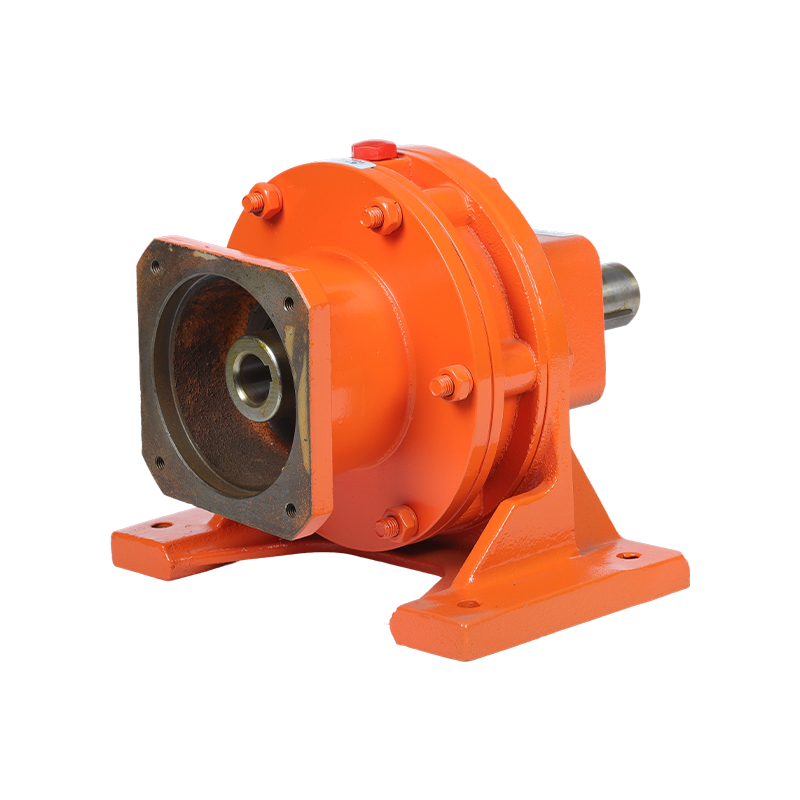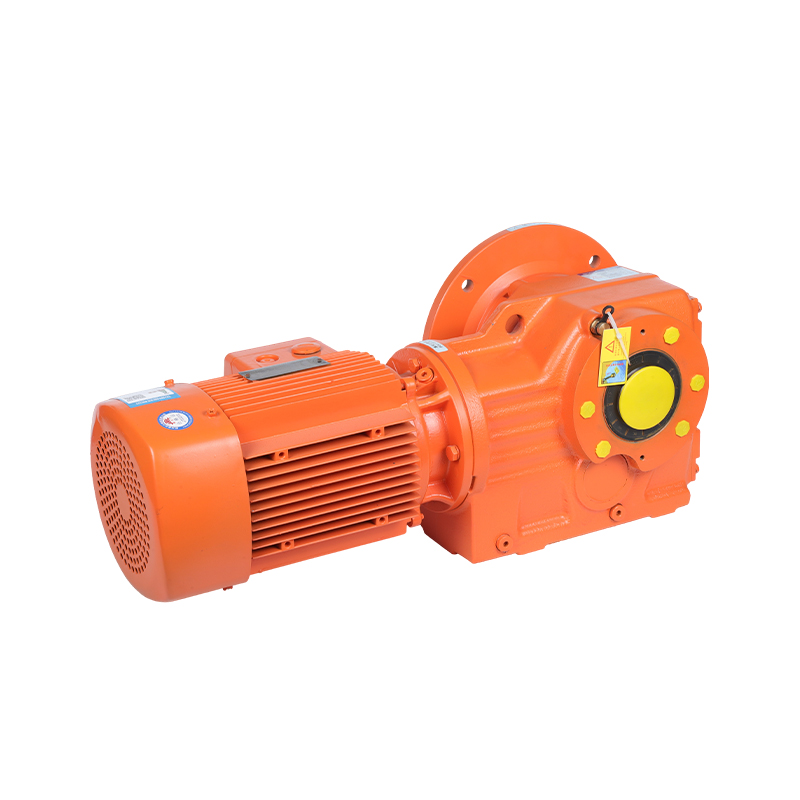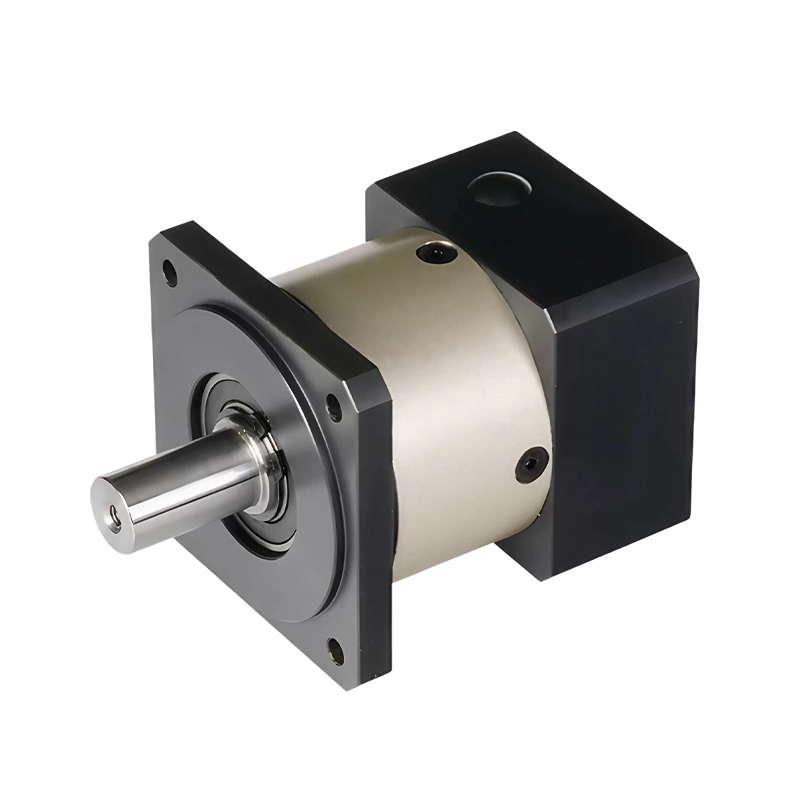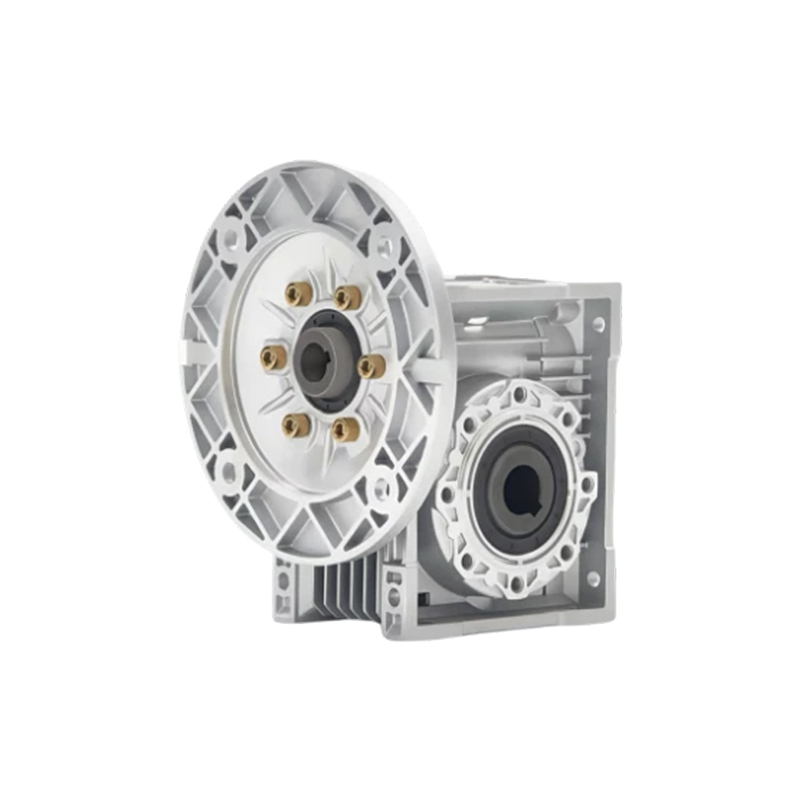How do gear reducers achieve high-precision torque output to meet the operational demands of precision equipment?
Release Time : 2025-10-14
In modern industrial automation systems, the power transmission requirements for precision equipment have long gone beyond simple "rotation" or "drive," pursuing precise control of every degree of rotation and every newton-meter of torque. Whether it's tool feeding in CNC machine tools, the coordinated motion of robot joints, or color registration in printing machinery, even minute torque fluctuations can lead to product defects or system instability. In this context, gear reducers, as key transmission components connecting motors and actuators, directly determine the operational quality of the entire equipment. This precision isn't achieved by chance; it stems from a deep synergy between structural design, material processing, and system matching.
The key to high-precision torque output lies in stability and predictability during the transmission process. Conventional transmission devices often experience torque lag, backlash, or output fluctuations when the load changes, resulting in inconsistent actuator movement. Precision gear reducers, however, optimize the gear mesh design to ensure that each pair of teeth maintains close and uniform contact throughout rotation. This meshing state is meticulously calculated and engineered to ensure zero backlash and elastic deformation in the power transmission path. Every bit of motor power is faithfully converted into stable torque at the output. Whether starting, running at a constant speed, or braking, torque response remains consistent, unaffected by even the slightest fluctuations in external loads, providing a solid foundation for precise control.
Achieving this goal relies on the manufacturing precision of the gears themselves. Gears within reducers are typically made of high-strength alloy steel and processed through precision grinding, shaving, or hobbing, resulting in highly precise tooth profiles and exceptional surface finish. This high-precision machining not only reduces friction and vibration during meshing but also ensures that each pair of gears maintains ideal contact over long-term operation, preventing torque fluctuations caused by wear or deformation. Furthermore, the heat treatment of the gears is crucial. Carburizing and quenching are used to enhance surface hardness and core toughness, ensuring structural stability while withstanding high loads and preventing plastic deformation or fatigue spalling.
In addition to the gears themselves, the overall structural design of the reducer also contributes to achieving torque accuracy. The housing is constructed of highly rigid materials to ensure deformation during operation and maintain correct meshing between gears. High-precision bearings minimize radial and axial play, preventing micro-shifting of the gears during rotation. The sealing and lubrication systems ensure a clean and stable operating environment, preventing impurities from entering or oil film rupture from affecting transmission smoothness. These details create a closed, reliable power transmission environment, freeing torque output from external interference.
In control systems, high-precision torque output also means seamless integration with components such as servo motors and encoders. Modern gear reducers are often used as part of servo systems. Their low backlash ensures that motor commands are instantly reflected at the output, without delay or deviation. This "command-to-action" responsiveness enables the equipment to maintain extremely high repeatability even during high-speed starts and stops, frequent direction changes, or fine-tuning positioning. For example, in automated assembly lines, every pick-up and placement operation by a robotic arm relies on the stable and precise torque output of the reducer; even the slightest jitter can impact product yield. High-precision reducers, like a calm dancer, execute every movement with silent precision.
Furthermore, torque output stability is also reflected in its ability to adapt to load fluctuations. Precision equipment often faces load fluctuations during operation, such as varying cutting forces and material weight variations. High-quality reducers can maintain a smooth transition in output torque during these changes, without sudden jumps or attenuation, ensuring process continuity and consistency.
In summary, achieving high-precision torque output with gear reducers is a sophisticated symphony of materials, processes, structures, and systems engineering. They not only transmit power but also convey the will of control, converting the motor's electrical energy into predictable, repeatable, and reliable mechanical action. The invisible meshing of gears embodies modern manufacturing's unwavering pursuit of ultimate precision.
The key to high-precision torque output lies in stability and predictability during the transmission process. Conventional transmission devices often experience torque lag, backlash, or output fluctuations when the load changes, resulting in inconsistent actuator movement. Precision gear reducers, however, optimize the gear mesh design to ensure that each pair of teeth maintains close and uniform contact throughout rotation. This meshing state is meticulously calculated and engineered to ensure zero backlash and elastic deformation in the power transmission path. Every bit of motor power is faithfully converted into stable torque at the output. Whether starting, running at a constant speed, or braking, torque response remains consistent, unaffected by even the slightest fluctuations in external loads, providing a solid foundation for precise control.
Achieving this goal relies on the manufacturing precision of the gears themselves. Gears within reducers are typically made of high-strength alloy steel and processed through precision grinding, shaving, or hobbing, resulting in highly precise tooth profiles and exceptional surface finish. This high-precision machining not only reduces friction and vibration during meshing but also ensures that each pair of gears maintains ideal contact over long-term operation, preventing torque fluctuations caused by wear or deformation. Furthermore, the heat treatment of the gears is crucial. Carburizing and quenching are used to enhance surface hardness and core toughness, ensuring structural stability while withstanding high loads and preventing plastic deformation or fatigue spalling.
In addition to the gears themselves, the overall structural design of the reducer also contributes to achieving torque accuracy. The housing is constructed of highly rigid materials to ensure deformation during operation and maintain correct meshing between gears. High-precision bearings minimize radial and axial play, preventing micro-shifting of the gears during rotation. The sealing and lubrication systems ensure a clean and stable operating environment, preventing impurities from entering or oil film rupture from affecting transmission smoothness. These details create a closed, reliable power transmission environment, freeing torque output from external interference.
In control systems, high-precision torque output also means seamless integration with components such as servo motors and encoders. Modern gear reducers are often used as part of servo systems. Their low backlash ensures that motor commands are instantly reflected at the output, without delay or deviation. This "command-to-action" responsiveness enables the equipment to maintain extremely high repeatability even during high-speed starts and stops, frequent direction changes, or fine-tuning positioning. For example, in automated assembly lines, every pick-up and placement operation by a robotic arm relies on the stable and precise torque output of the reducer; even the slightest jitter can impact product yield. High-precision reducers, like a calm dancer, execute every movement with silent precision.
Furthermore, torque output stability is also reflected in its ability to adapt to load fluctuations. Precision equipment often faces load fluctuations during operation, such as varying cutting forces and material weight variations. High-quality reducers can maintain a smooth transition in output torque during these changes, without sudden jumps or attenuation, ensuring process continuity and consistency.
In summary, achieving high-precision torque output with gear reducers is a sophisticated symphony of materials, processes, structures, and systems engineering. They not only transmit power but also convey the will of control, converting the motor's electrical energy into predictable, repeatable, and reliable mechanical action. The invisible meshing of gears embodies modern manufacturing's unwavering pursuit of ultimate precision.







